Grey squirrel with nut in autumn. Picture: Gillian Day
Our top 10 wildlife sightings for October
Tom Marshall
Squirrels going nuts
Grey squirrels were brought to the UK from the USA by animal-loving landowners from the 1870s onwards: now they are one of the iconic sights of the British autumn.
In October they spend much of their time gathering nuts - especially acorns - and burying them across their territory, but did you know that grey squirrels sometimes pretend to bury nuts!
Scientists have found they do this more when being watched, so it is thought the tactic aims to fool other animals that might try to steal their supplies. See if you can catch one in the act!
Woodland wildlife in autumn spotter sheet
A hedgehog eating pet food left out in a garden. Picture: Gillian Day
Hungry hogs
Hedgehogs also spend much of the autumn hunting for food to help them survive the winter but sadly, unlike grey squirrels, the species is struggling to survive.
In 1995 there were calculated to be around 1.5 million hedgehogs across the UK - it is now estimated there are fewer than 500,000.
Thankfully there are easy ways to help, such as putting out kitten biscuits or meat-based wet dog or cat food.
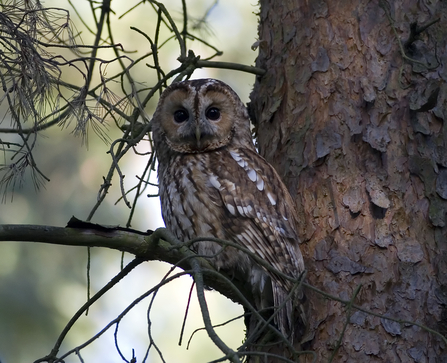
Tawny owl by Damian Waters
Owls of delight
Tawny owls are responsible for the iconic 'twit-twoo' owl call, and this is the best time of year to hear it.
After spring-born fledglings leave the nest in the summer, autumn is when tawnies start to establish their home range, and do so by calling – loudly.
These owls live across our area but prefer to nest in woodlands, so listen out for them at wooded nature reserves like Chimney Meadows in West Oxfordshire, Bowdown Woods in Berkshire or Dancersend near Aylesbury.
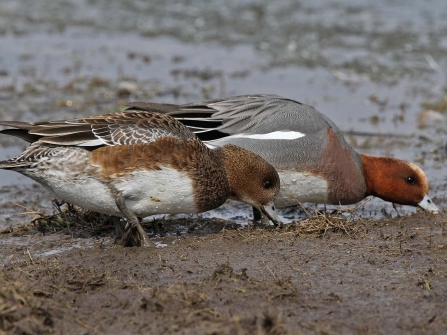
Russian ducks
Wigeon are one of the ducks that spend the winter here, flying thousands of miles from Russia, Scandinavia and Iceland.
With their pink breasts, chestnut heads and yellow foreheads, these birds are an attractive addition to our winter fauna. Look out for them flying into our College Lake nature reserve near Tring.
If you can't make it to College Lake or it's a miserable day, don't forget you can always see what's going on there from the comfort of your own home with our live webcam stream on YouTube!
College Lake bird hide livestream
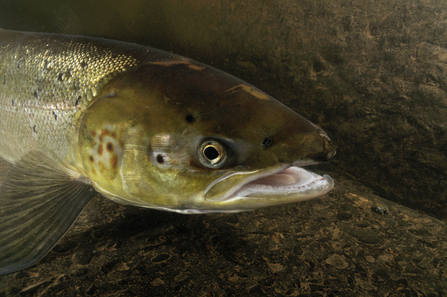
A female Atlantic salmon swimming up an English stream to spawn. Picture: Linda Pitkin
Spawning salmon
One of the most dramatic arrivals to our shores in autumn is the salmon.
Atlantic salmon hatch in rivers across England each spring, stay in those rivers for around three years then journey out into the ocean for up to four years before returning to the same rivers where they were born to spawn.
Salmon can return at any time of year, but millions choose the autumn when water levels are higher. Sadly, the UK spawning population has declined in recent years, but they can still be spotted in several hundred rivers across the country.
Find out more about all the freshwater fish you can find in our area
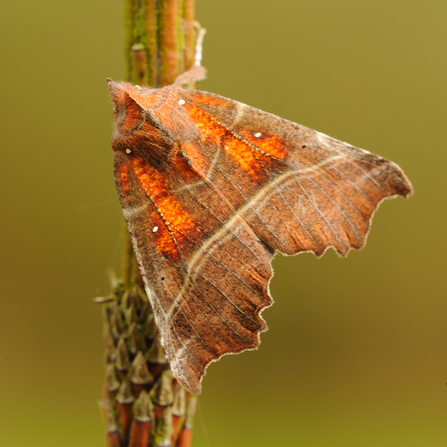
Herald ©Amy Lewis
Heralds of autumn
With its attractively crenellated orange wings, the herald is an unmistakable moth and one of our largest species.
It is also one of the few UK species that overwinters as an adult, in caves, barns and sheds.
They can be seen feeding late into the autumn to bulk up their reserves: look out for them on ivy flowers, competing with bees for the last of the sugary nectar.
Family activity: How to make a moth sheet trap in your garden
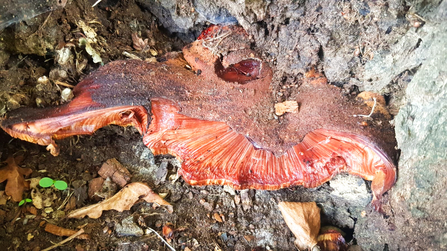
A beefsteak fungus growing out of a tree at BBOWT's Windsor Great Park Environmental Education Centre. Picture: Becky Downey
Beefy fungus
As mushroom season continues, there are hundreds of species to look out for, but one of the most striking is the beefsteak.
This fungus often has a fairly dull brown appearance on the outside, but cutting it open reveals a gory red interior that even 'bleeds' just like a raw beefsteak.
It is usually found in broadleaved woodland - our Warburg Nature Reserve near Henley is a great place to go fungus hunting.
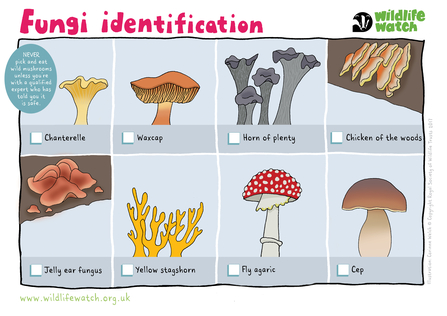
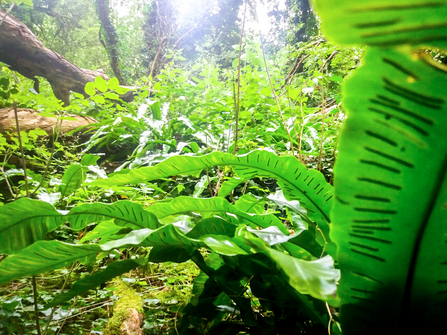
Ferns thriving at Hook Norton Cutting nature reserve in West Oxfordshire. Picture: Pete Hughes
Evergreen ferns
While most plants are dropping their leaves, the hart's tongue fern is an evergreen that provides a splash of colour at this time of year.
A great place to see it is our Hook Norton Cutting reserve in West Oxfordshire - a sheltered, moist woodland where these plants grow in big, bushy crowns.
Blog: Exploring the English rainforest at Hook Norton Cutting
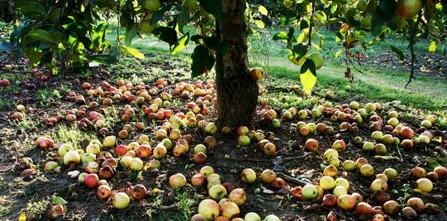
Apples by Jim Higham
Up the apples and pears
One of the sweetest treats of October is, of course, apples and pears.
While some varieties fruit from as early as August, others are just ripening now.
Crab apples tend to have smaller, finely toothed, oval leaves, and small, yellow-green fruits, while orchard varieties tend to have larger fruits in shades of green and red.
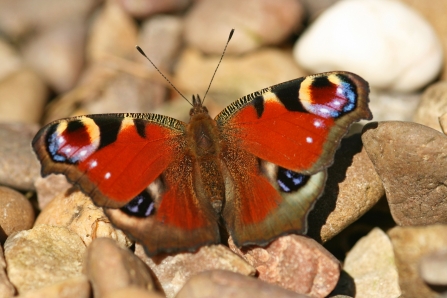
Peacock butterfly by Rachel Scopes
The last butterflies
Like the herald moth, peacock, red admiral and small tortoiseshell butterflies all overwinter as adults.
As a result they can all still be spotted at this time of year - but are thinking about hibernating.
Look out for them in the corners of sheds and houses trying to find a warm, safe spot, and if you find one, please don't put it outside!
Stay up-to-date with our work
Sign up below to receive the latest news from BBOWT, tips about how you can help wildlife, plus information on how you can get involved.

